The painter Gregor von Bochmann and his family
Google translation
Collection of photos and texts, reduced version of 2021 - The original version is part of the CD-Noël-2000 prepared by Gregor c. Bochmann in August 2000.
Gregor was born in Estonia in 1850 to a family of German descent. (Note: There has been a German minority in Estonia since the Middle Ages, when Teutonic (Christian) orders of chivalry tried to Christianize the country and conquer it. Later, still in the Middle Ages, Tallinn was part of the Hanse, an association of port towns that operated mercantile exchanges on the Baltic Sea and the North Sea.) His parents live on the Nehatu (German Nehat) farm estate from where his father supervised the forest estates of the region. He was administrator of forests (German year "Forstmeister") and had, following his participation in the Crimean war (1856) with the Russian army, obtained the title of nobility “von” of the Tsar of Russia. He also received as a gift the property of ""Toebel", Taebla in Estonian) east of Hapsalu, where Gregor spent his youth (here is a map of the Hapsalu region and an enlargement around Nehatu ). Gregor often followed his father on his tours through the Baltic lands and thus imbued his brain with the popular Baltic scenes of his time (see some old photos here , or see his paintings which they painted later). During the summer of 1999, while I was taking a trip through the Baltic States with my wife Elise and my daughter Karine, we also did a one day tour of the Nehatu region as described here .
To continue his studies in secondary school, he was sent to the capital Tallinn (in German Reval) where he studied at the Reval Gymnasium. His art teacher, A. Sprengel , recognizes his talent in painting (see here one of his drawings from his 9-year-old childhood ) and suggests that Gregor study after his “Abitur” (high school completion) at the Düsseldorf Academy of Fine Arts (Germany). Gregor received a scholarship from a foundation funded by the Estonian nobility and began his studies in 1868. Here is a letter that Sprengler wrote to his protégé in October 1868.
Gregor doesn't take a lot of classes at the Academy. After a drawing class, he took a course in landscapes with the renowned teacher Oswald Achenbach, only for a period of 6 months because the latter then retired. In 1871, Gregor founded his studio in Düsseldorf and became an independent artist. A large painting showing people gathering in front of an Estonian church was very noticed in 1876 and was sold in England. During our trip to Estonia in 1999, we saw this church in Ridala (in German Röthel) south of Hapsalu, which is a very beautiful church from the Middle Ages.
Note: Gregor's life mentioned above has been described by his daughter, Helene, in a few pages under the title “ Jugendzeit ”. There is also an autobiography which was published shortly after his death in 1930. The events of his subsequent life are documented by his work , newspaper articles (see for example "Blätter der LIGA" or "W. Schäfer" under the section "Zeitschriften" in Documentation), his participation in exhibitions, but also through photos, painted letters and postcards and other documents. Life among the Bochmanns after the First World War has been described in a very personal way in the "Jugenderinnerungen" by Renate von Bochmann, daughter of her sculptor son , who was brought up (with her brother Gregor, my father), to from the age of about 5, by his grandparents Bochmann because both parents were dead (the father died in the war in 1914, and the mother died of a brain tumor in 1915).
Gregor von Bochmann, the painter, and Emilie Poensgen (known as Milla) became engaged during a trip to Holland in the summer of 1876 and married in May 1877. Gregor had met Emilie at the house of friend von Gebhard, another artist from Tallinn, who was 12 years his senior. Emilie was born into a family of industrialists in Rheinland-Westfalen (the industrial region of the Ruhr area). The Poensgen family(number 1) is documented in the book "Deutsches Geschlechterbuch, Genealogisches Handbuch Bürgerlicher Familien, Band 123" (Zweiter Eiffel-Band, CAStarke Verlag, 1958) and is traced back to 1464 when Johann Servatius Puntzgen obtains the right to impose a tax on the exploitation of iron in the Eiffel region and will reside in the "Burghaus Steinenhaus bei dem Missgen" near Schleiden (he was born around 1410 and died around 1490/95); further information can be found in the book "Die Geschichte der Familie Poensgen, Teil 1" (bearbeitet von Dr. H. Kelleter in Neuss, Düsseldorf, 1908). As a wedding gift, the two receive a beautiful residence house on Kurfürstenstrasse (number 18) in Düsseldorf.
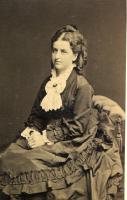 |
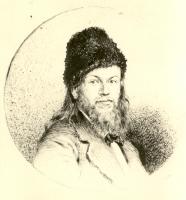 |
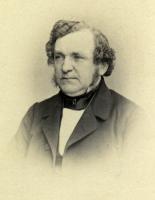 |
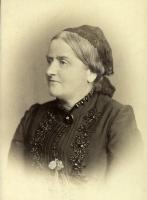 |
Emilie Poensgen,
1856 - 1935 |
Self-portrait
Gregor von Bochmann |
Julius Poensgen ,
father of Emilie (1814 - 1880) |
Louise Poensgen, née Mayer,
mother of Emilie (1828 - 1907)
(she comes from a Jewish family in Bamberg;
her father founded the first bookshop in Aachen,
which is still called "Mayerische Buchhandlung") |
They will have 4 children, Gregor (junior, also called Gregor II, born in 1878), Hélène (called Le, born in 1881), Elisabeth (called Li, born in 1884) and Ewald (born in 1888).
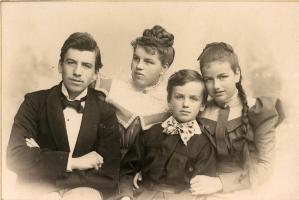 |
.jpg) |
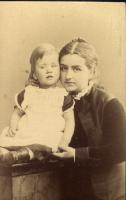 |
|
Gregor and Emilie's children:
Gregor II, Helene (Le), Ewald, Elisabeth (Li) |
Emilie and Gregor II
at 10 weeks (1878) |
Emilie and Gregor II,
circa 1880 |
|
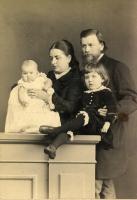 |
 |
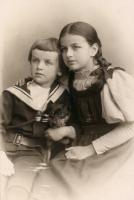 |
|
With the children
Gregor and Helene (1881) |
The father with Elisabeth |
Ewald and Elisabeth |
|
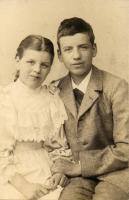 |
 |
|
|
| Helene and Gregor II |
Helene and Elisabeth |
|
|
The family live in their house in Düsseldorf, but during the summer they normally move to their country house in Hösel (about 20 km northeast of Düsseldorf, now Hösel is part of the city of Ratingen). As can be seen on a map drawn by the painter, the house is located on a hill. Her address was Fernholz 22 and she was a 20 minute walk from the station.
.jpg) |
.jpg) |
|
|
| The living room in their home in Düsseldorf |
ditto, more to the left.
The cabinet has three panels which were painted by the painter.
|
|
|
 |
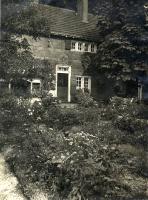 |
 |
|
Country house in Hösel
(this is a postcard) |
House in Hösel
with part of the garden
|
House in Hösel by back
in winter |
|
The children grow up and the painter works. He made a good number of trips to Holland, especially to Katwijk, a fishing village which is also a place where many artists spend their holidays, and where the painter finds new themes for these paintings. Other trips bring him to Belgium and Rügen (island in the Baltic Sea). He returns at least once to Estonia. (It seems that he made the last trip to Estonia when his father died in 1878). He later made trips to the Alps with his family (for example, in 1923).
.jpg) |
.jpg) |
.jpg) |
|
| The painter at work |
The painter at work |
The painter at work
(later) |
|
 |
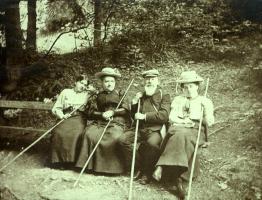 |
| Emilie at the beach with Elisabeth and Gregor |
Rest during a walk in the Alps
(this is a postcard sent on August 19, 1906) |
Professionally, Gregor is well recognized. He was appointed “professor” at the Düsseldorf Academy in 1895 and became a Member of the Berlin Academy in 1893. He also obtained German nationality and had the “von” recognized by the German Kaiser and designed the coat of arms on this occasion. for his family, a copy of which can be seen on the door of Hösel's house.He participated in many prestigious exhibitions and in 1906 organized a solo exhibition in Krefeld (another town in Rheinland-Westfalen).
From 1909 another generation of children arrived and the age of the grandparents began to be felt.
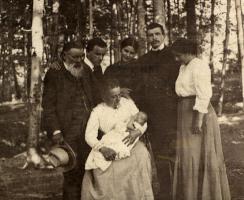 |
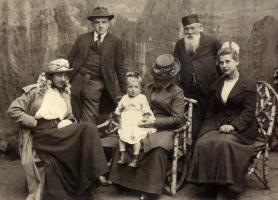 |
Emilie holds the newborn Gregor III,
son of Gregor II and Marianne (in 1909).
His sister Renate will be born on Dec. 1910. |
Emilie holds little Ruth, daughter of Marga and Ewald
(the person on the right is a housekeeper) |
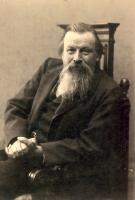 |
 |
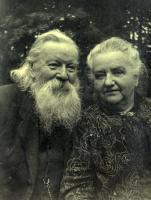 |
|
The painter Gregor
1901 |
Gregor, circa 1910 |
Gregor and Emilie
1927 (zur Goldenen Hochzeit) |
|
Life is tough after the First World War. Gregor continues to paint (now at a slower pace) and Emilie, who has always been the manager of the family, sells the paintings in return for edibles: this is the best way to survive in times of lack of supplies and inflation. This was the time when the grandchildren Gregor-III and Renate grew up with the grandparents in Düsseldorf.
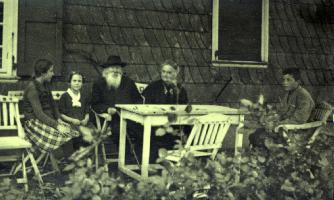 |
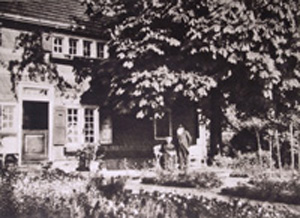 |
In front of the house in Hösel (autumn 1923):
with grandchildren Renate and GregorIII |
In front of the house in Hösel |
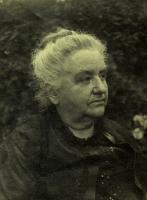 |
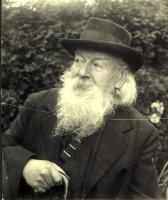 |
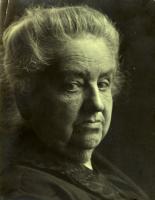 |
|
| Emilie in 1927 |
Gregor in 1927 |
Emilie in 1930 |
|
Gregor died at the age of 80 in 1930. An exhibition of remembrance was organized in 1930 at the "Kunstverein" in Düsseldorf (and another in 1951 for his 100th birthday). His tomb is in the forest cemetery (in German "Waldfriedhof") of Linnep (not far from Hösel). The tombstone contains a sculpture of his son and is protected as a historical monument. It is found on the forest cemetery ("Waldfriedhof") of Linnep (in the countryside near Linnep Castle in the Hösel region). On the base are inscribed the names: Gregor von Bochmann, Milla von Bochmann, and (on the side) Helene von Bochmann (died in 1961).
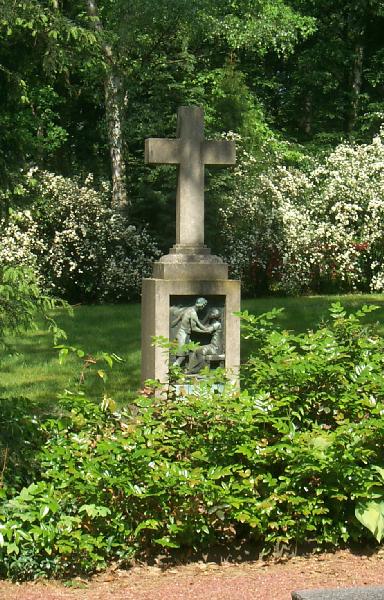

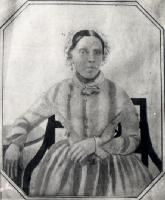
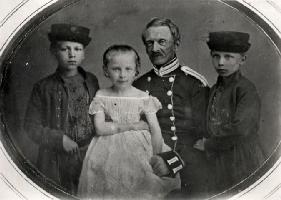





.jpg)






.jpg)
.jpg)



.jpg)
.jpg)
.jpg)












